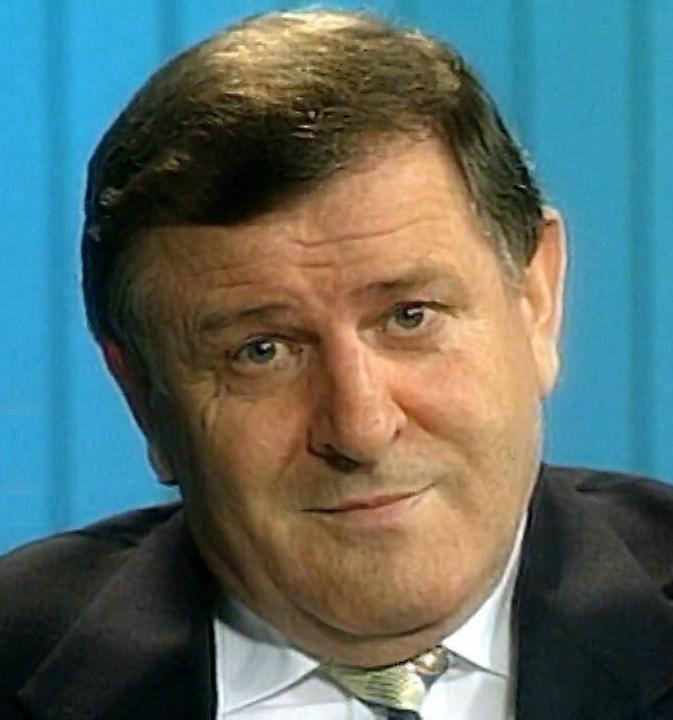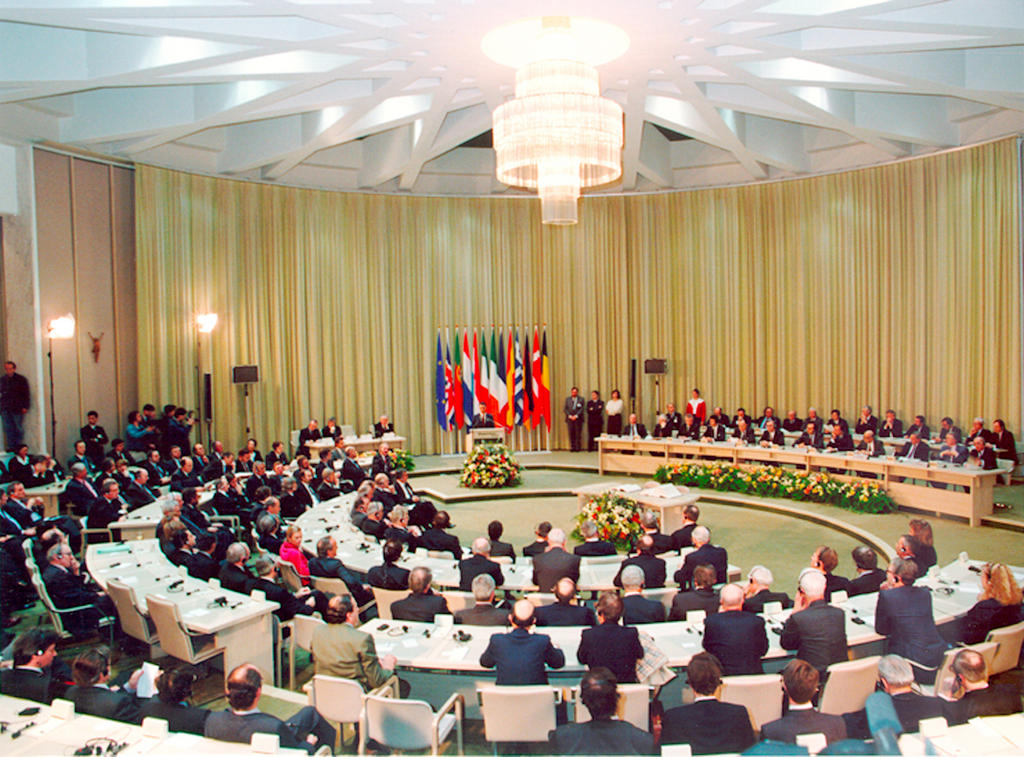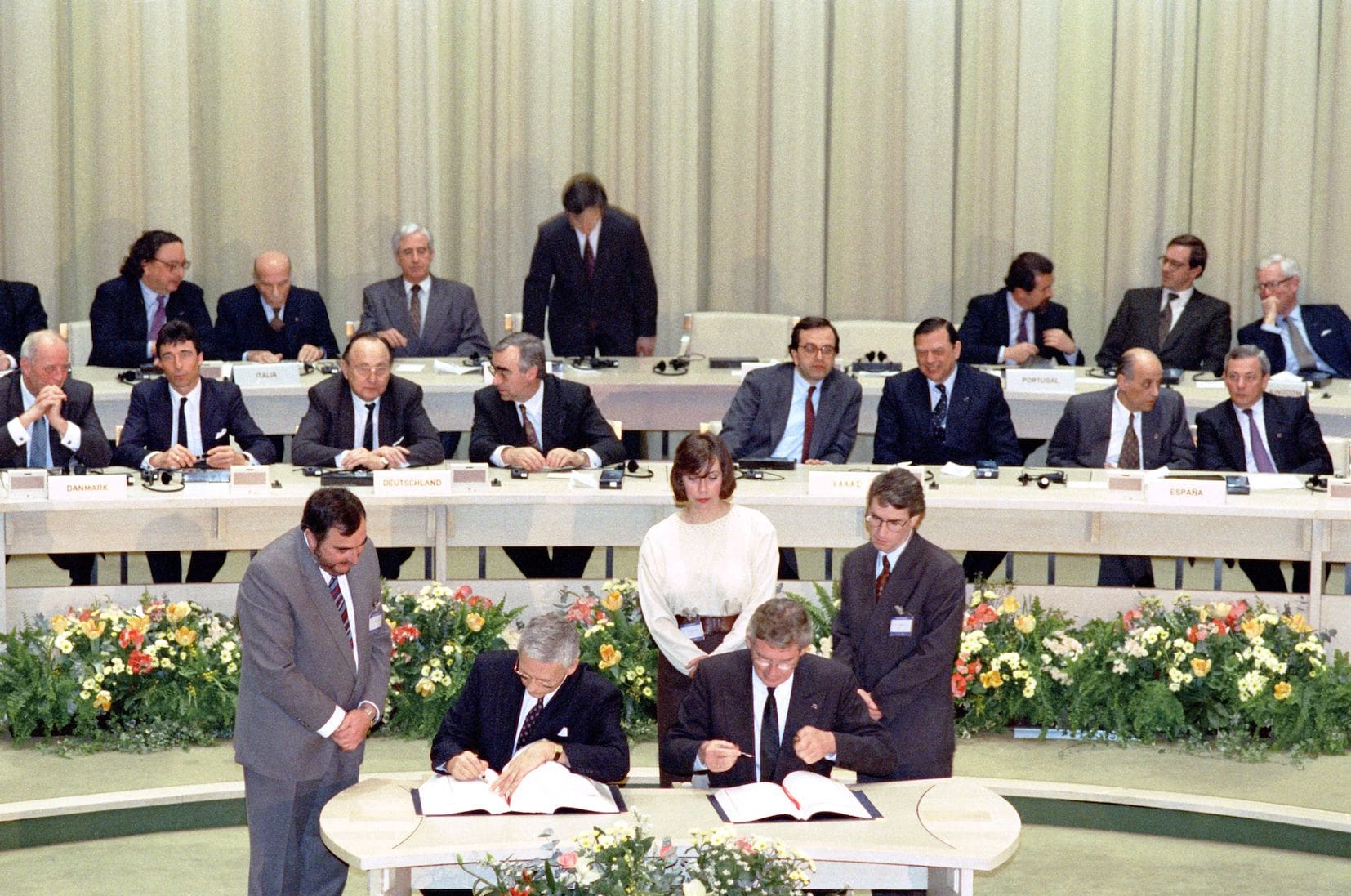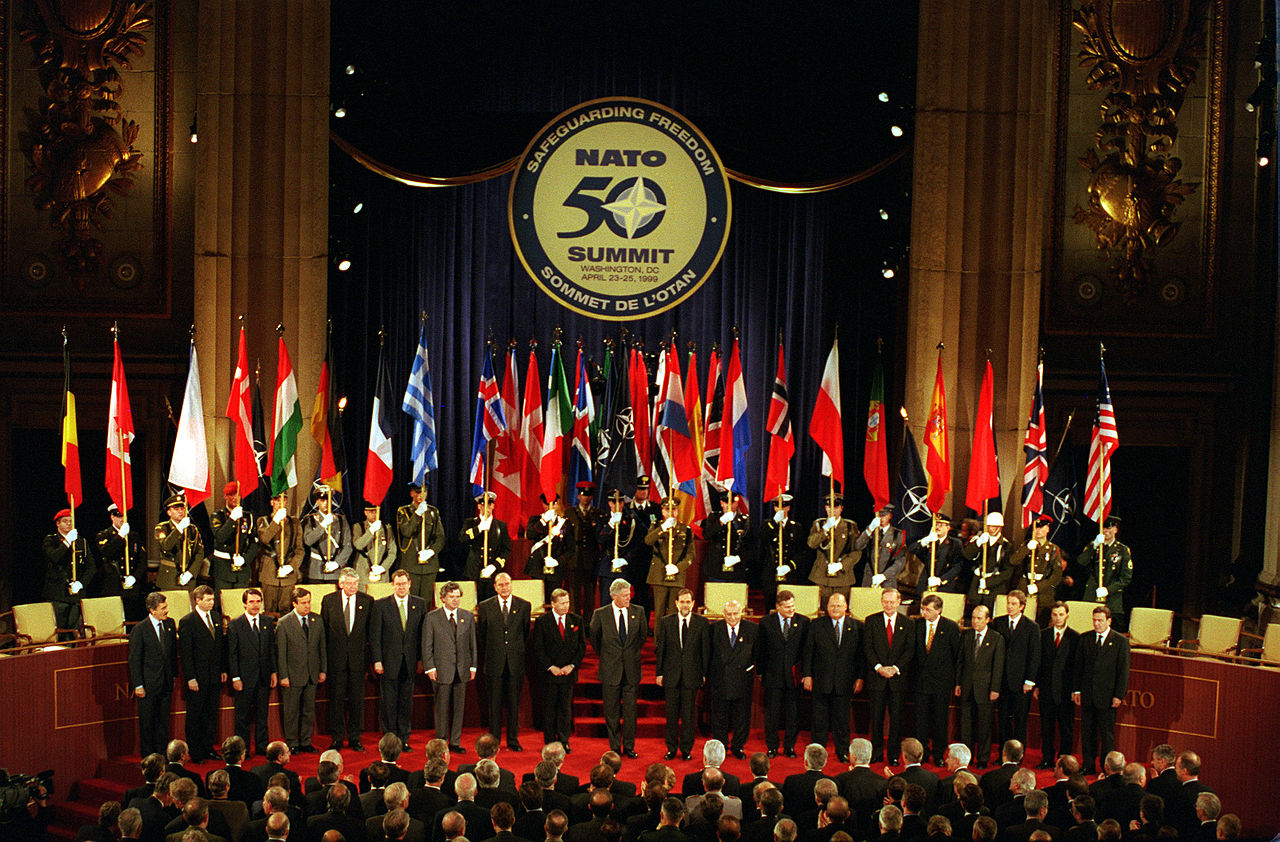20. PEACE


EUROPE MOVES AHEAD
 Expansion of the European
Expansion of the European Communities
The textual material on page below is drawn directly from my work
A Moral History of Western Society © 2024, Volume Two, pages 364-366 and pages 371-373.
EXPANSION OF THE EUROPEAN COMMUNITIES |
| In
1967, with the coming into effect of the Brussels Treaty, the
authorities governing the "three pillars" of the European Communities
(The European Coal and Steel Community, the European Economic
Community, and the European Atomic Energy Community) merged their
governing authorities into a single governing Council of European
Communities. Then as of June 1979, the then-410 members of the European
Parliament (governing those three communities) came to be directly
elected by the citizens of the EC member nations … which at that point
included the 9 member nations: France, Germany, Italy, the Netherlands,
Belgium, Luxembourg, Denmark, Ireland, and Britain (the United
Kingdom). Eventually Greece (1981), and Portugal and Spain (both in
1986) would be brought on as full members – after a lengthy period of
consideration of each … their admissions delayed because of various
economic and political complications. A big step forward towards true European unity was taken by the European Economic Community when in 1985, five of the ten members states signed the Schengen Agreement … in which border checks were eliminated – allowing the free movement of citizens across those borders at any point (not just at checkpoints). The following year (1986) a symbolically significant development took place when the new European flag was put into official use … and that same year signed an agreement (the Single European Act) calling for the creation of a single European market by the end of 1992. The Maastricht Treaty … and the new European Union (1992)
Then the twelve member nations took a huge step forward in the European integration movement when they signed a treaty in Maastricht, Netherlands, a treaty that reshaped the European Communities organizations into a single European Union … and at the same time set out a path leading toward shared European citizenship (the free movement of labor across European borders), a single European currency (ultimately the Euro), and a set of common foreign and security policies to be followed by the member nations. And the treaty represented a skillful compromise between those member nations skeptical of further unification and those who wanted to see even greater European unification. In any case, the Maastricht Treaty, in reorganizing the older European Communities as the new European Union, laid the foundations for something resembling a European federation. But it would take some skillful politicking to get this idea to be as gladly accepted by the European people themselves. In fact, in its first referendum on the matter, the Danish citizenry voted down the proposal … requiring some negotiations on the matter and then a second referendum – when it was finally approved by 57% of the Danish voters. France too voted its approval only by a slim margin. And in Britain it took skillful political maneuvering for Prime Minister John Major to get parliamentary approval (Labor being fervently opposed … as well as some of Major's Conservatives). There were other factors complicating the move forward of the Maastricht Treaty. The obvious likelihood of German reunification now that the Berlin Wall had come down made France and Britain (and other Europeans) quite nervous, economically as well as politically. France, under President Mitterrand, insisted that it would approve the German expansion in the European Union only if the Germans gave up their strong mark – and instead adopted the promised common currency. This French demand German Chancellor Helmut Kohl agreed to ... actually opening wider the door to the adoption of just such a currency. But on the other hand, the British were having difficulties maintaining the value of the British pound sterling according to a European Exchange Rate Mechanism (the ERM – one of the steps towards monetary union) … and simply withdrew from the ERM agreement, actually helping the pound regain its value – and helping the British economy and employment figures to improve dramatically. This would not help create much enthusiasm in Britain for the idea of an all-European single currency (the British in fact would ultimately refuse to abandon the pound and adopt the euro as their national currency, the only European Union member nation to refuse to join the monetary union). As far as the Maastricht provision for a set of common foreign and security policies, this had already been institutionalized somewhat since the early 1970s through formal agreements … and just through good diplomatic logic. And, after all, there was NATO – which under American direction tended to give a high degree of unity to matters vital to European national interests. At this point the EU was becoming something of a very formidable political, economic and social organization – compensating for the fact that European nations as individuals had lost the global pre-eminence that they once enjoyed … but now united, they constituted a new world power. But it would be a quiet world power, focused mostly on just making European life itself as grand as possible – at little or no cost to the rest of the world. Europeans would be quite content to be just that: Europeans. The European development continues
During the 1990s, much of the world found itself involved in a long, and thus rather unprecedented, period of economic growth … which made the world quite happy! The European Union grows. In 1993 Europe put the Maastricht Treaty into full force, not only expanding the administrative unification of the European Community members but also ending the use of their national currencies (the German mark, the French franc, the Italian lira, etc.) in adopting the use of the new all-European currency, the euro. Then two years later (January 1995), seeing the tremendous advantages in doing so, Sweden, Finland and Austria became members of the European Union. Now there were fifteen European countries comprising this growing economic (and political) union. The expansion of NATO (1999). In March of 1999, the Czech Republic, Hungary and Poland joined NATO. This of course extended NATO's reach deep into East Europe ... upsetting Russia deeply. But a relatively helpless Russia had, at this point, little it could do about the matter. |
RUSSIA STRUGGLES |
|
China opens up to a new industrial dynamic
Meanwhile, off in the Far East, China continued to expand its economy rapidly – averaging an amazing 10% annual increase in China's gross national product (GNP) ... with some bumps however along the way – bringing itself and the industrial world of the West into closer relationship. Definitely the Cold War was over! But Russia struggles
Russia found itself now friendly to the West, with Russian leader Yeltsin and American President Clinton seeming to become quite the buddies! But Russia was struggling economically … and socially.There was wealth to be made … but mostly in the hands of a small group of individuals with strong entrepreneurial instincts – not something native to the general Russian population. The rest of the Russians really struggled to find their way forward without the government there to take care of them every step of the way. Consequently, the net outcome of Russia's new social freedom was confusion, hunger … and bitterness. But Yeltsin seemed to have no answer to this problem. Admittedly, Russia did not fall apart because of all this "freedom." But it was not doing well under it either. Thus in April of 1993 Yeltsin put before his people a referendum based on a number of questions concerning the approval of his performance and the need for earlier elections ... and the probability of deep changes in the Russian Constitution. But with only 64% of the eligible population turning out for the referendum, the results were that his personal approval rating was 60% ... but his performance rating only 54% – and the call for early elections failed to gain a majority. But that same September, Yeltsin moved ahead anyway to strengthen his presidential position against the powers of the Russian Parliament. He called for the dissolution of Parliament and the holding of new elections. But hardliner (basically Communist) members of parliament barricaded them inside the parliament building, refusing to be dismissed ... and called for Yeltsin's impeachment, also declaring Vice President Alexander Rutskoy to be the new acting president. At this point, things blew up in the streets of Moscow as protesters (who had not fared well economically under Yeltsin's liberal reforms) turned out to conduct a fiery anti-Yeltsin street contest. The police were called on to stop the action. But things only worsened day by day as negotiations (hosted by the Russian Orthodox Church) dragged on. When in early October protesters decided to storm the television center, they were met by police ... and countless numbers were killed in the clash. Then the military was called on to choose which side it was supporting ... which turned out to be Yeltsin. Thus tanks were brought out and turned on the parliament building, destroying the upper floors. But finally, quiet returned to the streets. Generally at first the Russian people supported Yeltsin in his role in this "Second October Revolution" ... though that opinion about how that action was conducted would turn negative over the years as the Russian economy simply continued to stall ... despite Yeltsin's efforts to bring the Russian economy (and society in general) under his own tighter control. Tragically, too many years under state-controlled Communism (and Tsarist autocracy before that) had not permitted the development among the Russian people of a mind-set able to self-develop under a new regime. Unlike the Chinese, who had never completely lost urban China's entrepreneurial instincts – even during the two decades of life under Maoism – the Russian people, having never really had the opportunity at any point in their history to develop much of an entrepreneurial spirit, simply did not know how to take care of themselves in an open economy ... once again giving witness to the fact that "democratic Idealists" (Rousseau, Marx, Wilson, and soon also Bush, Jr.) – who believe that democracy is naturally instinctive to any "politically free" individual – have no idea how democracy actually works. |
A serious revolt of Russian hardliners in October of 1993 nearly succeeded
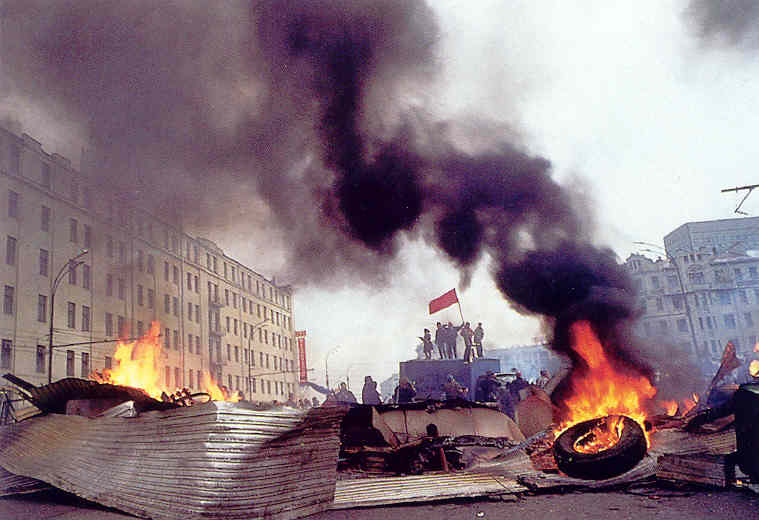
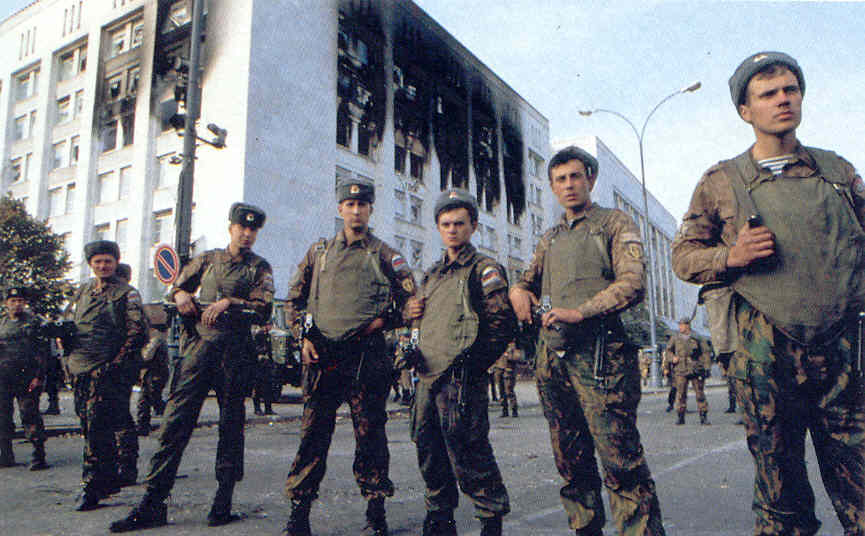
GERMANY UNITES |
| Meanwhile, Germany moved to unite a somewhat unwilling East Germany with its Western Federal Republic (October 1990) … subsequently finding that the East Germans had functioned too long under Socialism and also were having a hard time adjusting to West Germany's strongly entrepreneurial spirit … much less seeing each other as fellow Germans. But time – and a lot of very costly West German investment – would slowly bring better social harmony within the now-united Germany. And a united Germany would also finally gain acceptance on the part of the Europeans (some of the British and French, for instance), long-nervous about German reunification. |
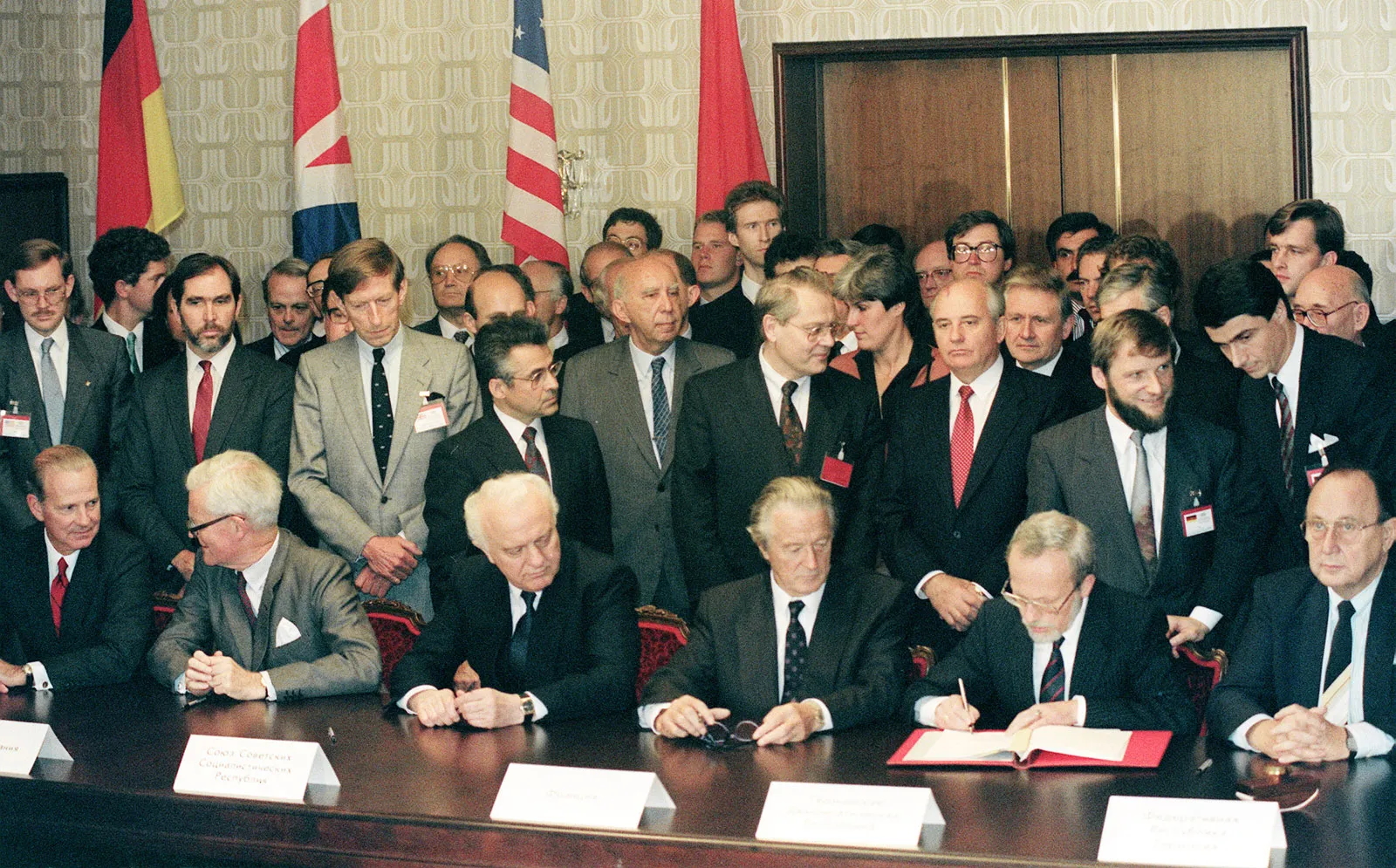
The formal signing of the German reunification treaty - September 12, 1990.
This act required the agreement of the four World War Two powers,
America, Britain, France, and Russia ... as well as the two Germanies involved.
Negotiations leading to the signing involved the rosolution of a number of
delicate questions of diplomatic and military status
(West Germany was, after all already a NATO member).
Anyway ... the event was celebrated wildly by the Germans.
But much work lay ahead ... in getting the two very different socio-economic habits
of the two Germanies to come into alignment
CZECHOSLOVAKIA SPLITS |
|
Progress in East Europe
East Europe fared much better than Russia under its new freedoms … economic growth registering itself generally across the former Soviet satellite countries. Czechoslovakia splits
However, as of the end of 1992, Czechoslovakia split into two separate states, the Czech Republic (or Czechia) and Slovakia. The two societies had never been close, with the Czechs or Bohemians West-oriented and the Slovakians East-oriented. There was not only very little social connection between the two societies during their time of unity as Czechoslovakia (1919-1992) but little political connection as well … especially as the capital city Prague seemed itself mostly just focused on matters in the Czech world. Slovakia's major city Bratislava also seemed to be of minor importance in the general scheme of things. Thus it was that in mid-1992 negotiations involving the departure of Slovakia were undertaken … peacefully. But Slovakia would find economic development very difficult to achieve on its own. |
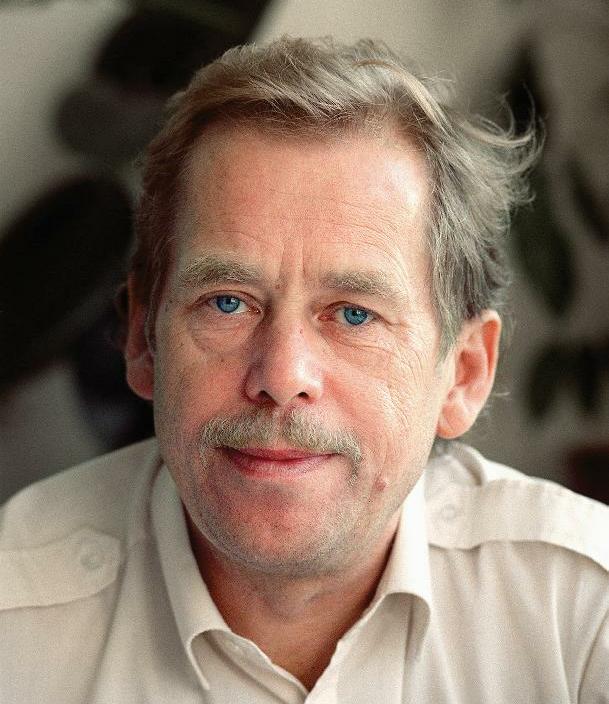
Václav Havel (above: Czech) and Vladimír Meciar (below: Slovakian) leaders of newly the independent Czech Republic (or Czechia) and Slovakia
